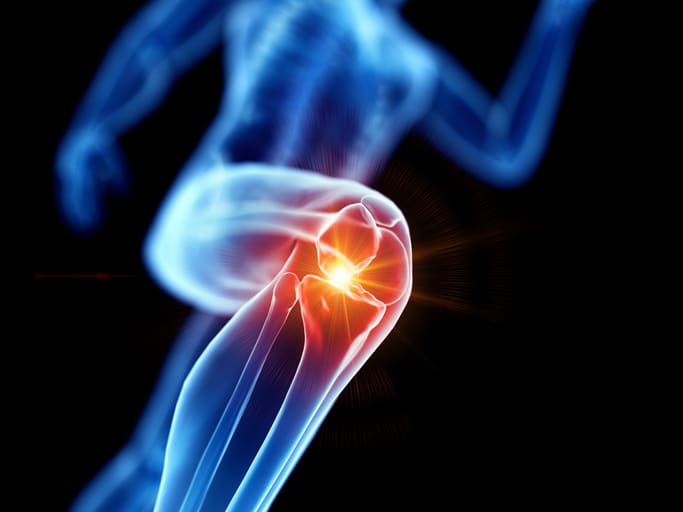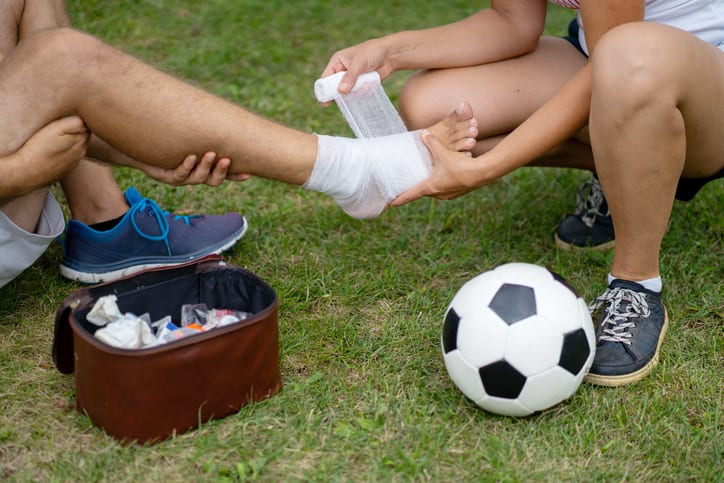What you "kneed" to know about caring for your joints

[5 min read]
In this article:
- As we welcome warmer, sunny weather in the PNW, there's a good chance you're getting back to your active, outdoor lifestyle. Or at least thinking about it.
- Increased physical activity can put pressure on our joints, causing discomfort or, for some, degenration or serious injury.
- A Swedish orthopedics expert has some guidance to help you keep your joints healthy for the long run (or walk).
The first sign of more sun and warmer days ahead in the Pacific Northwest doesn’t just bring out the daffodils, there’s also a notable increase in locals out for neighborhood walks, hikes in the forest and bike rides along the Puget Sound. PNW residents are an active group, with 1.2 million Seattleites (or 36% of the adult population) reporting going on a hike in the past year.
The trade-off many see for their active outdoor lifestyle is creaky knees and sore hips, ranging from annoying, nagging discomfort to debilitating pain.
Joint pain can be a result of general overuse in an active lifestyle or a sudden injury from a fall or while playing sports. More serious joint damage and degeneration result from aging, genetics, serious trauma or a combination of these, says David Ibrahim, M.D., an orthopedic surgeon at Providence Swedish Orthopedics.
“In general, living in Seattle, we see a lot of people engaged in hiking, running and cycling,” Dr. Ibrahim says. “The majority of patients are active until pain starts impeding activities.”
Routine wear and tear in an active lifestyle can lead to joint degeneration by age 55 or 60.
“We can’t prevent degeneration from happening, but we can prolong the time until joint replacement is necessary,” says Dr. Ibrahim.
Regular TLC can help you maintain healthier joints
Your joints are where two bones meet. These bones are surrounded by soft tissue like flexible cartilage tissue covering the bones’ ends, bendy bands of tendons that connect muscles to the bones and ligaments that stabilize the connection.
During an activity like running, the hip, knee and ankle absorb force, compressing these joints. Dr. Ibrahim recommends that for those who enjoy high-impact activities, a good way to minimize joint damage is to find shoes that are designed to maximize shock absorption from the ankle to the hip. Those who already experience joint pain may choose to find alternative, lower-impact exercises, like cycling, elliptical machines, swimming or water aerobics.
It's important to always warm up and cool down before or after putting your joints to work, advises Dr. Ibrahim. Jumping straight into your activity is like “starting a car and revving it when it’s still cold. Your body needs a warm-up to get going,” he explains.
Using braces and sleeves to support and control swelling in joints can be useful, but Dr. Ibrahim cautions against overuse of these tools. The devices can send misleading signals to your brain. “Your brain thinks the joint is tidy, but the brace doesn’t actually stabilize the joint.” A brace may make your joint feel better, but needing a brace is a good indication it may be time for an exam.
Call in the pros
When it’s time to get medical help for painful joints and a patient is referred to an orthopedic physician, X-rays will be used as a “looking glass into the joint,” says Dr. Ibrahim. Along with isolated images of the joint in question, a physician may look at other areas for different sources of pain, like arthritis. Physicians also sometimes use the advanced imaging of CT or MRI to get a more detailed look.
“It’s never too early to get in for an evaluation with a joint surgeon,” Dr. Ibrahim says. Especially if a patient has a family history of arthritis or other genetic conditions. “By catching arthritis early, we often have more conservative options to offer patients.”
Not everyone who is referred to a joint physician ends up needing surgery. Over-the-counter medication, anti-inflammatory cortisol shots, or physical therapy may be enough.
For some acute injuries or long-term joint degeneration, surgery may be the best option. Today there are minimally invasive surgical techniques that can minimize damage to the surrounding soft tissue and shorten recovery times.
Dr. Ibrahim uses robotics and minimally invasive surgical techniques in joint replacements.
“Robotics and computer-assisted surgery can help us do hip and knee replacements, and partial knee replacements, with improved accuracy and precision,” he says. “This image-based surgery helps us customize the surgery and implant positioning through more meticulous, patient-specific planning and surgical cuts.”
In order to keep your joints in the best health, the best recipe for success is to stay active. Dr. Ibrahim notes that even a daily walk is enough to boost joint health and prevent cartilage atrophy.
Learn more and find a physician or advanced practice clinician (APC)
Do you or a loved one need to consult about a spine or orthopedic surgery or a joint replacement? Experts at the Swedish Orthopedic Institute (SOI) can help. To make an appointment with an expert at Providence Swedish Orthopedics, call 206-386-6171.
Whether you require an in-person visit or want to consult a doctor virtually, you have options. Contact Swedish Primary Care to schedule an appointment with a primary care provider. You can also connect virtually with your provider to review your symptoms, provide instruction and follow up as needed. And with Swedish ExpressCare Virtual you can receive treatment in minutes for common conditions such as colds, flu, urinary tract infections and more. You can use our provider directory to find a specialist or primary care physician near you.
Information for patients and visitors
Related resources
Providence Swedish Orthopedics opens at First Hill
Achieve your fitness goals with these tips from an Ultimate Frisbee pro
A new shoulder helped this athlete continue his decades-long winning streak
That twinge is telling you something. Don’t ignore back pain.
This information is not intended as a substitute for professional medical care. Always follow your health care professional’s instructions.
Follow us on Facebook, Instagram and X.



